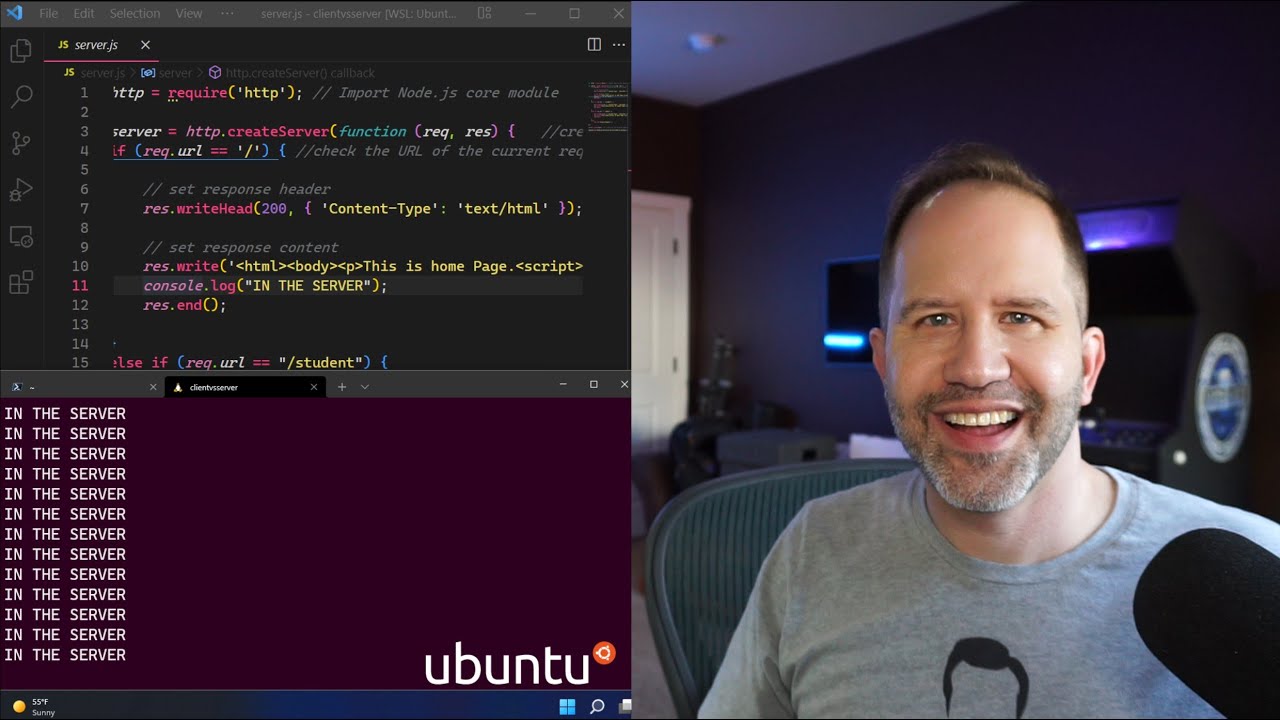What is .NET? What's C# and F#? What's the .NET Ecosystem? .NET Core Explained, what can .NET build?
Summary
TLDRIn this video, Scott Hanselman provides a comprehensive introduction to the .NET ecosystem, explaining its core components, including languages, runtimes, and libraries. He demystifies .NET by discussing its open-source nature, cross-platform capabilities, and how it enables the development of a variety of applications—from desktop and web apps to mobile games and IoT solutions. Hanselman highlights key features such as the Common Language Runtime (CLR), NuGet package management, and the flexibility of languages like C#, F#, and VB. He also demonstrates how .NET supports developers through an expansive, interoperable ecosystem.
Takeaways
- 😀 .NET is an ecosystem, not just a programming language. It includes runtimes, languages, and libraries to build various types of applications.
- 😀 .NET supports multiple platforms including desktop, web, mobile (Android, iOS), and even games through Unity with C# at its core.
- 😀 The .NET ecosystem includes several runtimes like .NET Framework, .NET Core, and Mono/Xamarin, which have now merged into a unified SDK.
- 😀 .NET Core is open-source and cross-platform, running on Windows, macOS, Linux, and Docker environments.
- 😀 .NET provides a vast set of built-in libraries, allowing developers to avoid searching for third-party libraries for common tasks.
- 😀 The .NET SDK includes tools for building, running, and publishing applications, using commands like 'dotnet new', 'dotnet build', and 'dotnet run'.
- 😀 The Common Language Runtime (CLR) enables applications written in various languages to run seamlessly across platforms in the .NET ecosystem.
- 😀 .NET uses NuGet for package management, similar to NPM for JavaScript or Maven for Java, enabling easy access to third-party libraries.
- 😀 .NET supports several programming languages including C#, F#, and VB, with each language offering unique features for different use cases.
- 😀 .NET's flexibility allows developers to switch between different language versions (e.g., C# 9), offering a dynamic and evolving development environment.
- 😀 .NET's robust support for large-scale applications is enhanced by features like project files that manage configurations, settings, and dependencies.
Q & A
What is .NET, and how is it described in the video?
-.NET is described as a platform for building various applications, which includes a runtime, a series of programming languages, and libraries. It allows developers to build everything from desktop apps to web and mobile applications, and it supports multiple execution environments like Windows, macOS, Linux, and even gaming platforms like Unity.
What is the common misconception about .NET discussed in the video?
-A common misconception is that .NET is simply a programming language or a product. In reality, it is an ecosystem that includes languages (like C#, F#, and VB), runtimes, and libraries, making it a full-fledged platform for application development.
What were the previous versions of .NET mentioned in the video, and how have they evolved?
-The previous versions mentioned are the .NET Framework, which was Windows-only, and .NET Core, which is cross-platform and open source. Mono and Xamarin were also open-source re-implementations designed for Linux and mobile devices. These have all now been consolidated into a single SDK with a unified base class library.
What does the .NET SDK include, and why is it important?
-The .NET SDK includes the tools required for building .NET applications, including compilers, libraries, and the runtime environment. It is important because it provides a streamlined, cross-platform development environment that supports different types of applications and can run on various operating systems.
How does .NET handle cross-platform development?
-Through .NET Core, now part of a unified platform, .NET enables cross-platform development. The same application can run on Windows, macOS, and Linux, making it possible to develop on any platform and deploy on others.
What is the role of NuGet in the .NET ecosystem?
-NuGet is the package manager for .NET, allowing developers to bring in third-party libraries and open-source packages. It is similar to npm for JavaScript or Maven for Java. Through NuGet, developers can easily include additional functionalities in their applications.
What is the Common Language Runtime (CLR), and why is it important for .NET?
-The CLR is the execution environment that runs .NET applications. It manages memory, execution, and other runtime functions, ensuring that .NET applications can run consistently across different platforms. It is comparable to the Java Virtual Machine (JVM) in the Java ecosystem.
What is the purpose of the 'dotnet' command line interface?
-The 'dotnet' command line interface (CLI) is used to interact with .NET applications. It allows developers to create, build, run, and publish applications, as well as manage dependencies and project configurations through commands like 'dotnet build,' 'dotnet run,' and 'dotnet publish.'
How does C# 9 differ from previous versions, as demonstrated in the video?
-C# 9 introduces new features like top-level programs, which allow for a simpler syntax without the need for explicit entry points or class declarations. It also includes pattern matching enhancements, making it easier to write concise and functional code.
What are some of the languages in the .NET ecosystem, and how do they interact?
-The primary languages in the .NET ecosystem are C#, F#, and VB. These languages can interoperate within the same .NET application, meaning that a program written in one language can use libraries and functions from others, as they all run on the Common Language Runtime (CLR).
Outlines

このセクションは有料ユーザー限定です。 アクセスするには、アップグレードをお願いします。
今すぐアップグレードMindmap

このセクションは有料ユーザー限定です。 アクセスするには、アップグレードをお願いします。
今すぐアップグレードKeywords

このセクションは有料ユーザー限定です。 アクセスするには、アップグレードをお願いします。
今すぐアップグレードHighlights

このセクションは有料ユーザー限定です。 アクセスするには、アップグレードをお願いします。
今すぐアップグレードTranscripts

このセクションは有料ユーザー限定です。 アクセスするには、アップグレードをお願いします。
今すぐアップグレード関連動画をさらに表示

Client-side vs Server-side, Front-end vs Back-end? Beginner Explanation of JavaScript on the Web

"Stop Using LINQ in .NET!"

Use Azure Virtual Desktop Insights to monitor your AVD deployment | Azure Friday

INDEX OPTIONS EXPLAINED: What Are They & How Are They NOT Stock/Equity Options?

How to Unlock SCOTT User in Oracle Database 18c Express Edition | Configure using SQL Developer

How to use Google Keep - Tutorial for Beginners
5.0 / 5 (0 votes)
